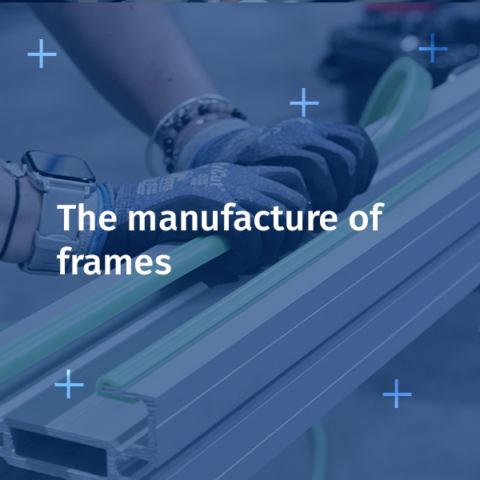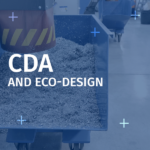At CDA, we manufacture the frames for all our machines (filling machines, capping machines, and labelers) within our CDU department. This approach allows us to guarantee the quality, robustness, and precision of the frames, which are key components for the proper functioning of our equipment.
The frame manufacturing process consists of several key steps:
1. Designing the plan by the engineering department (BE)
The manufacturing process always begins with the creation of a detailed plan by our Engineering Department (BE). This plan precisely defines the dimensions, angles, cuts, and required placements for assembling the different parts of the frame, while considering the technical and functional constraints of the machines to be installed. The BE collaborates closely with other departments to ensure that each frame meets our clients’ requirements.
2. Frame Cutting: laser or waterjet?
Once the plan is finalized, we proceed with cutting the sheets required for manufacturing the frame. Two high-precision cutting techniques are used in our workshops: laser cutting and waterjet cutting.
- Laser Cutting: This technique uses a very fine and powerful laser beam to heat and cut the sheet with great precision. It is ideal for medium to thin materials and allows for a clean, rapid cut without deformation. Laser cutting is particularly suited for complex cuts and small tolerances, and it can process metals such as stainless steel, aluminum, and mild steel.
- Waterjet Cutting: Waterjet cutting uses a high-pressure water jet, sometimes combined with an abrasive, to cut thicker or heat-sensitive materials. This method is heat-free, preventing any thermal deformation of the material, making it ideal for thick materials or applications requiring cuts without altering the metal’s properties. Waterjet cutting can also cut a wide range of materials, including plastics and composites.
Each method is chosen based on the frame specifications, the material type, and the thickness of the sheets.
3. Sheet bending
After cutting, the sheets are subjected to the bending process. This operation shapes the parts into their final form, respecting precise angles to ensure the strength and functionality of the frame. Bending is done using high-precision press brakes that apply controlled force to bend the metal without causing deformation. This step is critical, as any bending error can compromise subsequent assembly. Bending guarantees the exact dimensions and ensures a perfect assembly of the various parts of the frame. The bends can be simple or complex, depending on the structure required for each machine.
4. Welding
The final step in frame manufacturing is welding. After bending, the parts are assembled and welded together to form the final frame structure. Welding is crucial for ensuring the machine’s robustness and durability. The welds must be strong and precise to guarantee the frame’s longevity, while ensuring that the components mounted on the frame are perfectly aligned and secured.
Discover this step in the video: Manufacturing a Frame for Our VST Capper and Feeder Machine
Conclusion: In-House manufacturing for controlled quality
The frame manufacturing process in our workshop is meticulous and rigorous, relying on a complete mastery of each step, from design to welding. By performing all these operations in-house, we guarantee full control over the quality and reliability of the frames. This allows us to meet the most stringent client requirements and provide robust frames perfectly compatible with our machines, ensuring maximum long-term performance.







